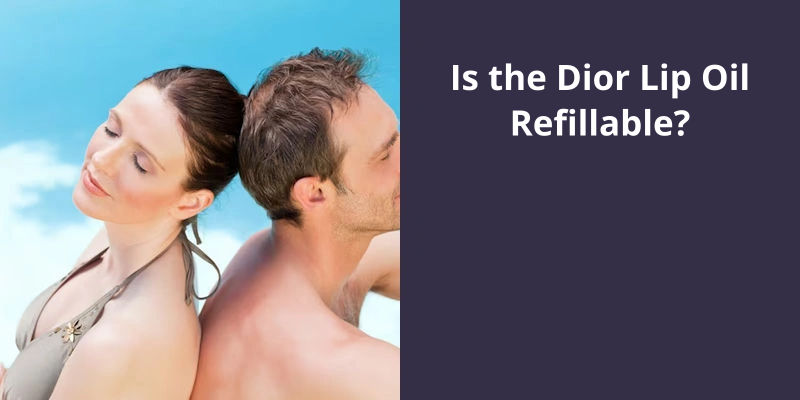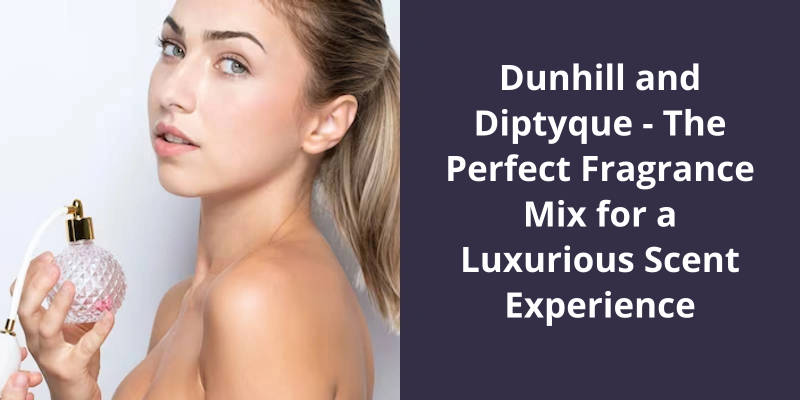The world of fragrances has always been a fascination to many people, with it’s diverse and mesmerizing scents that capture our senses in ways we can never forget. The art of making perfumes and colognes is something that’s been mastered over centuries, with various techniques and formulas employed to achieve the perfect scent. However, have you ever thought about why colognes have caps and why they’re so important? Well, it turns out that caps play a vital role in preserving the fragrance and ensuring it remains intact for as long as possible. Without caps, perfumes with an alcoholic or oily base would be exposed to the environment, and this would cause them to deteriorate and lose their potency over time. Thus, to safeguard these precious liquids, a cap was needed, one that would seal them off from environmental factors such as humidity, dust, oxygen, and light. This way, the aroma and formulation of the cologne are kept intact, allowing us to enjoy their beautiful scents for longer periods.

Why Do Perfumes Have Caps?
Early perfume caps were made of various materials such as cork, glass, or metal. These caps were often intricately designed to reflect the fragrances they contained, with delicate details, and ornate shapes. Such caps were often made of precious metals and stones, adding to the luxurious feel of the fragrance.
As the popularity of perfumes grew, with manufacturers trying to outdo each other in the design of the bottles, fragrances caps became more than just a functional cover. They became part of the perfumes branding and packaging strategy. In fact, a fragrances cap would often be indicative of the fragrances style, quality, and brand. For example, a simple, understated cap would symbolize a subtle, elegant fragrance, while a more flamboyant design would indicate a bold, daring scent.
For instance, the Chloé brand has their signature metal plate cap, while Jo Malones signature cap is their cream and black box encasing.
Perfume caps have also picked up cultural significance, with some brands showcasing caps that reflect their cultural heritage. For example, Ikat fabric was used for a Dior fragrance cap, reflecting Indian textiles, while Gucci released a fragrance with a cap inspired by the traditional Japanese tea ceremony.
The Evolution of Perfume Bottle Design and It’s Relation to the Use of Caps
- The first perfume bottles were simple glass containers with cork stoppers.
- In the 19th century, perfume bottles became more ornate, with designs inspired by art nouveau and art deco movements.
- During the 20th century, perfume bottles became works of art in their own right, with designers such as Lalique and Cartier creating exquisite bottles for their fragrances.
- The use of caps on perfume bottles became more common in the mid-20th century, with many designers incorporating decorative caps into their bottle designs.
- Today, perfume bottle design continues to evolve, with a focus on sustainability and eco-friendliness.
The design and packaging of a perfume plays a crucial role in attracting customers and making a lasting impression. One important element of perfume packaging is the cap, which not only protects the fragrance but also adds an aesthetic appeal. Transparent caps have become increasingly popular due to their unique look and versatility. In fact, many perfume brands opt for tinted solutions that maintain transparency, ensuring that the color of the cap matches the liquid in the bottle. Let’s explore the reasons and benefits behind this trend.
What Is Cap in Perfume?
Perfume packaging plays an essential role in capturing the attention of consumers and conveying the brands message. It’s the first thing that consumers notice when they pick up a bottle of fragrance. As such, perfume caps are crucial as they provide an opportunity for the brand to showcase it’s uniqueness and personality.
Among the different types of perfume caps, transparent caps are becoming increasingly popular. These caps offer a sleek and modern look that appeals to younger consumers and those seeking a minimalistic design. They also allow consumers to see the color and quality of the perfume liquid, enhancing the overall visual experience.
The increasing popularity of transparent caps, with a tinted solution that maintains transparency, offers a modern, sleek, and harmonious design that can enhance the overall consumer experience. These caps provide an opportunity for brands to showcase their distinct personality, which can positively impact consumers perception and emotion towards the product.
Different Types of Perfume Caps and Their Materials (e.g. Metal, Plastic, Glass)
This topic explores the various materials used to create perfume caps, such as metal, plastic, and glass. These caps serve both aesthetic and practical purposes, and their materials can impact the overall design, durability, and weight of the perfume bottle.
To ensure optimal longevity and fragrance intensity of your perfume, proper storage is key. However, what happens when you misplace or lose the cap to your perfume bottle? Fear not, there are still options available to keep your perfume safe and secure without a cap.
How Do You Store Perfume Without a Cap?
One creative solution for storing perfume bottles without caps is to place them in an airtight container. This could be a small Tupperware container or a jewelry box with a tight-fitting lid. By creating a sealed environment, the perfume’s aroma compounds aren’t exposed to the air and evaporation is minimized.
Another option is to store the perfume in small sample vials or atomizers. These can be purchased online or at beauty supply stores. This method also allows for easy transport of perfume in a purse or travel bag.
For those who don’t want to purchase additional containers, an old sock can do the trick. Simply slip the perfume bottle into an old sock and tie a knot at the top to create a makeshift cap. This may not be the most aesthetically pleasing option, but it will help prevent excessive evaporation and extend the life of the perfume.
Some perfume lovers recommend storing their fragrance in the refrigerator. This can help keep the scent fresh and cool, but it’s important to note that extreme cold temperatures can also damage the perfume’s delicate ingredients.
Lastly, it’s important to consider the quality of the perfume when storing it without a cap. High quality fragrances often come with specialized packaging that helps to preserve the scent. If possible, keep the perfume in it’s original packaging to ensure that it stays fresh for as long as possible.
Whether it’s through an airtight container, small sample vials, or an old sock, perfume lovers can keep their fragrance fresh and long-lasting with a bit of creativity and experimentation.
Source: Perfume Without Cap: A Complete Guide to Using and Storing …
Now that we know the basic composition of perfumes, let’s take a closer look at the components that make up a perfume bottle. From the elegant glass bottle to the spray nozzle, each element plays an essential role in preserving the fragrance and enhancing the overall user experience. So, what exactly are the different components of a perfume bottle? Let’s find out.
What Are the Components of a Perfume Bottle?
However, a perfume bottle isn’t just a container for the fragrant liquid. It’s a work of art and a statement of luxury. The components of a perfume bottle are designed to complement the fragrance inside, as well as to enhance the aesthetic appeal of the product. Some of the key components include the cap, spray mechanism, bottle shape, color, and material.
The cap is often the most ornamental part of a perfume bottle. It can be made of metal, plastic, or glass and can be adorned with jewels, engravings, or intricate designs. The cap serves to protect the fragrance from air and light, as well as to add a touch of elegance to the overall design of the bottle.
The spray mechanism is responsible for delivering the fragrance to the user. Most modern perfume bottles use a spray pump that’s activated by pressing down on a button or twisting the cap. The spray mechanism must be reliable and easy to use, as well as aesthetically pleasing, to meet the demands of consumers.
The shape of the bottle is also important. Perfume bottles come in a variety of shapes, from classic round bottles to angular and geometric designs. The shape of the bottle can reflect the personality of the fragrance inside, as well as the personality of the brand. A sleek and modern bottle might suggest a contemporary, edgy fragrance, while a more traditional shape might be associated with a classic, timeless scent.
The color of the bottle can also be significant. Transparent and glass colors can provide an unobstructed view of the fragrance inside, while opaque or colored bottles can add a visual element to the design. Certain colors, such as black or gold, can evoke a sense of luxury and sophistication, while bright colors might suggest a more playful or youthful fragrance.
Finally, the material of the bottle can have a significant impact on the overall product. Glass is a common material used for perfume bottles as it allows the fragrance to be seen and is durable and inert. Plastic is also used for cost-effective products, and metal or ceramic is used for more unique designs. Each material has it’s benefits and drawbacks, and the choice of material will depend on the fragrance, design, and target market for the product.
The History of Perfume Bottles and Their Evolution Over Time.
- Ancient Egyptians were the first to use perfume bottles. They were made of clay and papyrus.
- In the Middle Ages, perfume bottles were made of glass and were decorated with gold and silver.
- In the 18th and 19th centuries, perfume bottles became more elaborate and were often made of crystal, porcelain, or enamel.
- In the 20th century, perfume bottles became more modern and minimalistic in design, with simple shapes and clean lines.
- Today, perfume bottles are often considered works of art and are collected by enthusiasts.
When it comes to designing a perfume bottle, the cap is just as important as the fragrance itself. The right cap can add a touch of elegance, sophistication, or playfulness to the overall presentation. One of the most popular materials for perfume caps is a family of alloys that includes zinc, aluminum, magnesium, and copper. At Privé Label, we offer a diverse range of metal perfume caps that can be customized to fit any bottle design. Whether you’re looking for a classic, timeless look or something more bold and striking, we’ve got you covered.
What Are Perfume Caps Made Of?
Perfume caps or bottle covers are as important as the fragrance itself. A perfume bottle without an appropriate cap is incomplete. In this regard, a perfume cap plays a crucial role in preserving the quality of the fragrance. Hence the material used to manufacture the caps must be of high quality.
At Privé Label, we’ve an endless range of metals available for you to choose from to suit your design requirements. Our range includes stainless steel, aluminum, zinc, and magnesium alloy caps to name a few. We make sure the materials used are of the highest quality and comply with the industry standards to provide our clients with the best possible product.
Zinc and aluminum alloy caps are a popular choice due to their durability and resistance to corrosion. Zinc is said to be a more eco-friendly and cost-effective option, as it’s a non-toxic and recyclable metal. On the other hand, magnesium alloy is known for it’s lightweight yet sturdy physique, making it an ideal option for high-end perfume bottles.
Copper is another material that’s often used in the manufacturing of high-end perfume bottle caps mainly due to it’s ability to resist corrosion and add a luxurious finish. Although copper can be more expensive in comparison to other materials, it’s well worth the investment as it adds a touch of sophistication to the overall look of the perfume bottle.
Choosing the right material for the cap of your perfume bottle can significantly impact the overall look and longevity of your fragrance. At Privé Label, we understand the value of selecting the right material for the design and we strive to provide our clients with the best possible materials. With our vast array of metal options available, we’re confident that we can provide our clients with the perfect cap to complement their perfume design.
The Role of Branding in Perfume Cap Design.
- Branding enhances the perceived value of the perfume.
- Perfume cap designs with branding contribute to consumer loyalty.
- Branding helps to differentiate one perfume brand from another.
- Perfume cap designs are an important aspect of the branding process.
- Brand recognition is increased with branded perfume cap designs.
- Perfume cap designs with branding increase the perceived luxury of the perfume.
- Brand consistency is important in perfume cap designs to maintain brand integrity.
- Branding in perfume cap designs can influence purchasing decisions.
- Perfume cap designs with branding can act as a status symbol for consumers.
- Branded perfume cap designs can contribute to a sense of exclusivity for the consumer.
Conclusion
They protect the mixture within from deteriorating due to external factors such as humidity, dust, oxygen, and light. The process of preparing and making perfumes isn’t an easy one; it requires a lot of time, care, and attention to detail. Therefore, it makes sense that companies would want to ensure that the fragrances are used to the fullest and maintain their quality for as long as possible.





